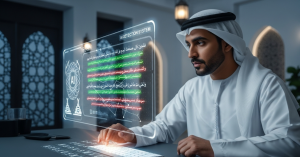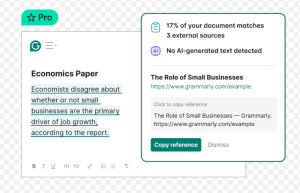In today's rapidly evolving digital landscape, the detection of AI-generated Arabic text has become an indispensable topic that no professional can afford to ignore. Whether you're a beginner or an experienced practitioner, understanding the nuances of Arabic AI detectors will provide you with invaluable insights and actionable strategies. This comprehensive guide will explore all aspects of Arabic AI detection, offering you practical knowledge and proven approaches to achieve success.
Why Arabic AI Detection Matters More Than Ever in 2025
The explosive growth of AI models generating Arabic text is making the distinction between human and machine-written content increasingly difficult.[1][2] Verifying content originality is vital for businesses to ensure their digital content isn't plagiarized or lacking in genuine depth. In the academic and media spheres, maintaining trust is paramount, as unreliable AI-generated content can undermine credibility. Proactive detection also safeguards against misinformation and helps SEO teams produce authentic, high-value content.
Finding the Best: What Makes a Top Arabic AI Detector in 2025?
General AI detectors often fall short with Arabic's unique linguistic complexities, such as its diverse dialects and the use of diacritics (marks above and below letters).[1][3] Therefore, you need tools specifically trained for these nuances. Look for transparency in accuracy metrics like precision, recall, and F1-score to gauge a detector's reliability against false positives and negatives.[4] Consider how frequently a detector updates its algorithms to keep pace with the swift evolution of AI content generation models.[5] The best tools offer insightful SEO data related to content quality, rather than just a simple pass/fail, helping your SEO optimization efforts.
Our Top 7 Arabic AI Detectors for 2025: Your Go-To List
Each tool is evaluated for its specific strengths in Arabic language processing, user interface, and overall reliability for identifying AI-generated content.
-
Originality.ai: This tool demonstrates high accuracy in detecting AI-generated Arabic content, particularly in academic and social media contexts, with near-perfect accuracy and F1-scores in some studies.[4] It boasts a low rate of false positives and supports multiple languages, including Arabic.[4][6]
-
Pangram Labs: Pangram's multilingual AI detector supports over 20 languages, including Arabic, with a claimed accuracy of over 99%.[7] The tool has been specifically adapted to support non-English languages and offers API integration for seamless workflow implementation.[7]
-
Copyleaks: With support for over 30 languages, Copyleaks' AI detector claims an accuracy rate of over 99%.[5][8] It is designed to detect content from popular LLMs and is updated as new models emerge.[5] Some reports note that its accuracy can decrease with paraphrased content and that it may produce false positives.[9][10]
-
AI Detector Pro: This tool detects AI content in several languages, including Arabic, and offers a unique “AI Eraser” feature for English text, which provides rewriting suggestions to make the text less likely to be flagged as AI-generated.[11]
-
Isgen: A multilingual AI detector that supports Arabic, Isgen claims high accuracy and a very low false positive rate in its benchmarks. It is designed to detect text from various large language models like GPT-4, Claude AI, and Gemini.[12]
-
Undetectable AI: This tool offers AI detection capabilities and supports a wide range of languages, including Arabic. It aims to help users verify the authenticity of their content.[13] It also provides a feature to “humanize” text to bypass AI detection.[13]
-
Scribbr: While Scribbr offers a plagiarism checker that supports Arabic, its dedicated AI detector is available for a more limited set of languages.[14] However, its AI detection technology is proprietary and designed to identify text from tools like ChatGPT with high accuracy.[14][15]
Integrating Arabic AI Detectors into Your 2025 Content Workflow
Understand how these AI tools fit into your larger content creation and SEO optimization strategy for 2025. You can devise strategies for using an AI Content Detector alongside AI Content Generators and AI Paraphrasing Tools to streamline your workflow while maintaining integrity. However, it's crucial to remember that human review and manual work remain indispensable, even with the most advanced AI detection technologies. Implementing best practices for consistent content originality checks is especially critical for high-stakes digital content.
Common Challenges and Solutions for Arabic AI Detection in 2025
The complexity of the Arabic language, including its numerous dialects and the use of diacritics, presents significant challenges for AI detection.[1][3][16] Many detection systems are primarily trained on non-diacritized Arabic text, which can lead to lower accuracy when encountering diacritized text.[1][17]
To address this, researchers are developing more robust detection models trained on diverse datasets that include both diacritized and non-diacritized text.[17][18] Strategies to reduce instances where human text is flagged as AI (false positives) or AI content goes undetected (false negatives) are crucial. Choosing detectors that adapt quickly to the rapid advancements in AI-generated content is also important.[5] Furthermore, best practices for data privacy and compliance must be considered when submitting your valuable digital content for AI detection. Cross-verification using multiple AI tools and human expertise is essential to ensure accuracy.
The Future of Arabic AI Detection: What to Expect in 2025 and Beyond
The future of Arabic AI detection will likely see the emergence of cutting-edge developments like AI watermarking, which could embed undetectable markers in AI-generated content.[19] Expect the integration of more sophisticated linguistic analysis for finer distinctions between human and machine writing styles in Arabic. AI SEO Tools will continue to evolve, offering more robust features for content verification and authenticity. Equipping your SEO teams with foresight into upcoming trends will be key to maintaining a competitive edge in digital content creation and originality.









